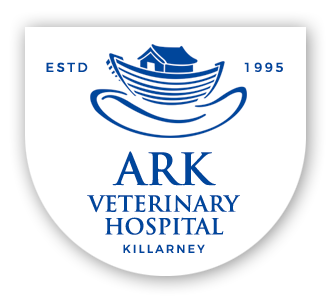
Anesthesiology
We are at Ark Veterinary Hospital use the safest most modern anesthetic drugs combined with gaseous intubation. This combined with expert monitoring minimizes the risk to your pet when having a procedures. Anytime a pet is scheduled for surgery or another procedure requiring anesthesia, it’s understandable that you will be concerned. Many owners worry that their pets are too young, too old, or too sick to be ‘put under’ and the idea of anesthesia and how it works is both mysterious and frightening. When used properly, and with a complete knowledge of a pet’s overall health, anesthesia is a wonderful tool that enables animals to receive invasive procedures with no pain.
Understanding Anesthesia
Before surgery, the anesthesiologist reviews the pet’s history, paying special attention to health concerns that may affect anesthesia. It’s also helpful to know if a pet has ever had anesthesia and whether he/she experienced any problems. This knowledge helps the anesthesiologist design a protocol (plan) to limit or prevent the same problems from occurring again.
What is Anesthesia?
Anesthesia is the loss of sensation to the body. It can be localized to a small part of the body, or involve the entire patient. We describe anesthesia based on how broad or specific its actions are.
General anesthesia is when the entire patient lacks sensation and awareness. This form of anesthesia is most commonly used for surgical procedures and some diagnostic procedures that require the patient to remain perfectly still and not move.
Local anesthesia is when a very small, specific part of the patient’s body is blocked from feeling a procedure. Local anesthesia can be performed with the animal completely awake, with the patient sedated, or as a part of the general anesthesia and analgesia plan.
Regional anesthesia falls somewhere between general anesthesia and local anesthesia. It generally provides anesthesia to a region of the body, like the hindquarters when an epidural is performed.
How does anesthesia work?
Anesthesia can be achieved in a number of ways, and exactly how it works depends, in part, on the medications used. General anesthesia involves the animal’s entire body, so these medications work on the brain. They put the animal into what is equivalent to a very deep sleep. When this happens, the animal is not aware of what is happening to it. They will be relaxed and still, allowing veterinarians to perform surgery or other procedures. Additionally, pain medications can be given when surgery is performed or the animal is painful to further keep the animal happy and free of pain when the medications keeping them unaware are discontinued.
Local anesthesia does not affect the animal’s consciousness. Instead, these medications work to prevent the nerves in the area from sending a signal to the animal’s brain that something unpleasant may be happening in that particular area. This method provides not only anesthesia (lack of awareness), but also analgesia (relief from pain) in a particular area. Local anesthesia is often used in conjunction with general anesthesia, as it can provide pain relief both during and after surgery, and allows lower amounts of the medications used for general anesthesia, all while keeping the animal as comfortable and happy as possible.
How is anesthesia administered?
Anesthetic medications can be administered in a few different ways. Many of the initial sedatives and pain medications are given through an injection into one of the animal’s muscles. This shot can be given quickly and does not stress the patient. Once these medications have taken effect, further medications used to start anesthesia can be given via an intravenous injection. This method allows the medications to work very rapidly, with minimal stress or anxiety to the patient.
Once the animal is asleep, a tube is usually inserted into the animal’s windpipe (trachea). This allows the animal to receive oxygen and an anesthetic gas. The anesthetic gas will keep the animal asleep during the procedure. In some cases, we will choose to maintain the anesthesia in the patient with injectable medications. In these situations, the medications are given through a catheter placed in a vein.
Local anesthetics are also injected, but their location depends on the area that we want to numb. In many cases, they will be injected under the skin close to a nerve. Depending on the amount of local anesthetic used, there may be a small bump (or bleb) visible just under the skin, but the bump will quickly disappear.
Regional anesthesia covers a larger area than a local block, but less than general anesthesia. The most common form of regional anesthesia is an epidural block. For this, medication is injected into the epidural space which lies close to the spine and its nerves. This allows us to provide pain relief to a broad location, and the analgesia can last even after the patient wakes up.
Why is anesthesia safe?
Anesthesia in dogs and cats can be very safe. Reasons for this include advancements in the safety of medications used for anesthesia. These medications cause relatively minimal disruptions of the patient’s normal body functions. Also, the use of a variety of types of medications- sedatives, pain medications, inhaled anesthesia gases- allows lower doses of each to be used, which will lessen the side effects of these drugs.
The biggest improvement in patient safety comes not from the medications and techniques used, but from the people administering the medications and monitoring the patient’s vital signs during anesthesia. While the medications are generally safe, different procedures or the animal’s health can make the patient less stable for anesthesia. The trained anesthesia staff at Ark Veterinary Hospital closely watches the patient from administration of the first sedatives until that patient is awake. Because of this close observation, if any complications arise, they can be treated right away. This monitoring is critical for the safe outcome for your pet.
How can an anesthesiologist help my pet?
To begin, anesthesiologists perform a thorough physical exam paying special attention to the heart and lungs. These organs are the ones most likely to be affected by anesthesia. Once the pre-anesthetic evaluation is complete, the anesthesiologist will order medications and plan techniques for safe and effective anesthesia and pain relief for the patient during his/her procedure.
While under anesthesia, the patient’s vital signs are continuously monitored. In particular, the heart rate, heart rhythm, blood pressure, respiratory rate and depth, and oxygenation are observed. This careful monitoring allows the anesthesiologist to identify abnormalities and complications quickly, and intervene with treatments to help correct these problems.
Once the procedure and anesthesia are finished, the anesthesiologist continues to monitor the patient’s heart and lung function as well as the pet’s pain and comfort levels during the recovery phase. While pain can be challenging to evaluate in animals, the anesthesiologist uses a variety of clues to identify uncomfortable animals. A happy, pain-free patient will be relaxed, calm, and have a normal heart rate and respiratory rate. These patients will often sleep quietly after anesthesia.

your pet since 1995
